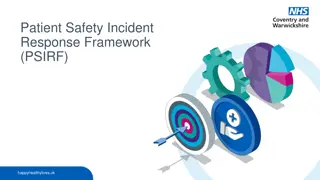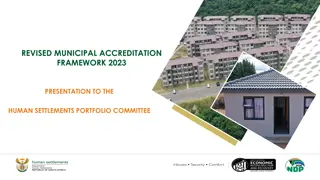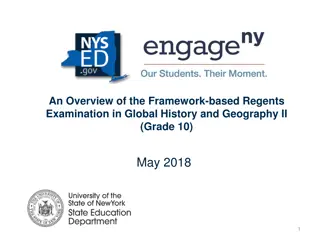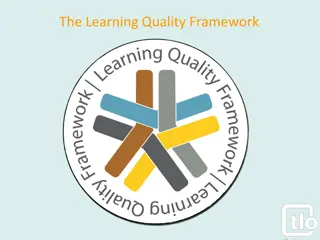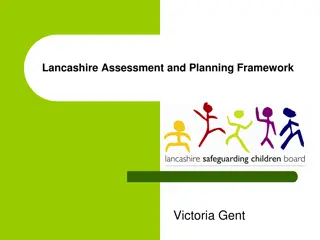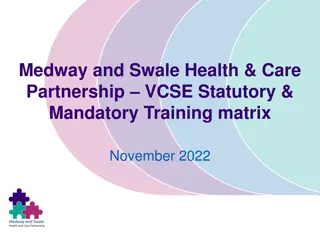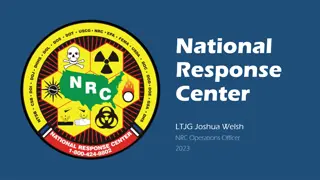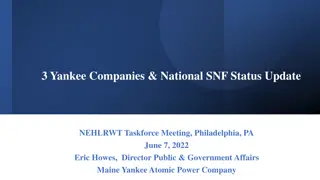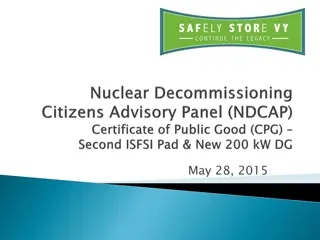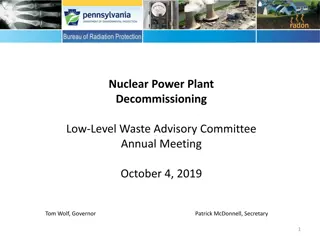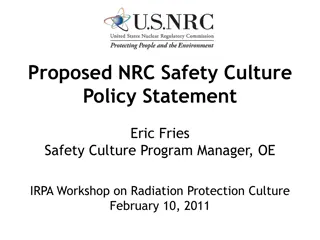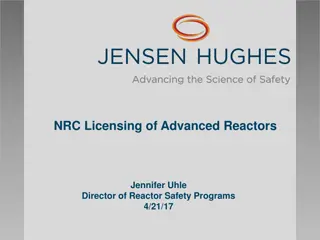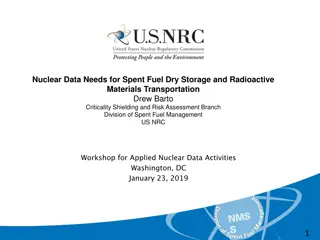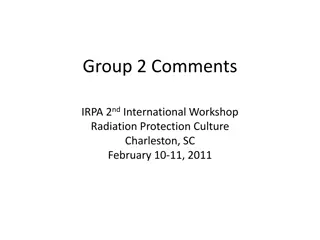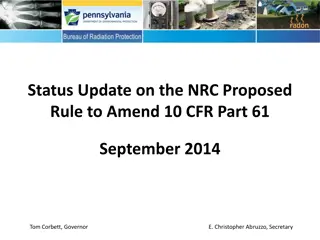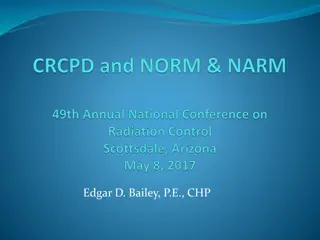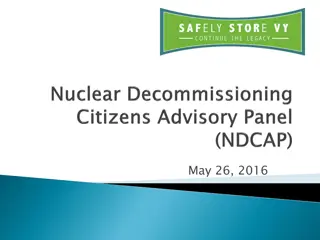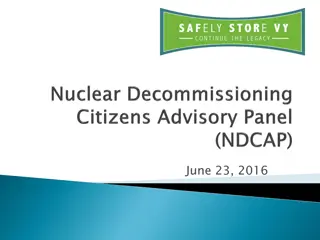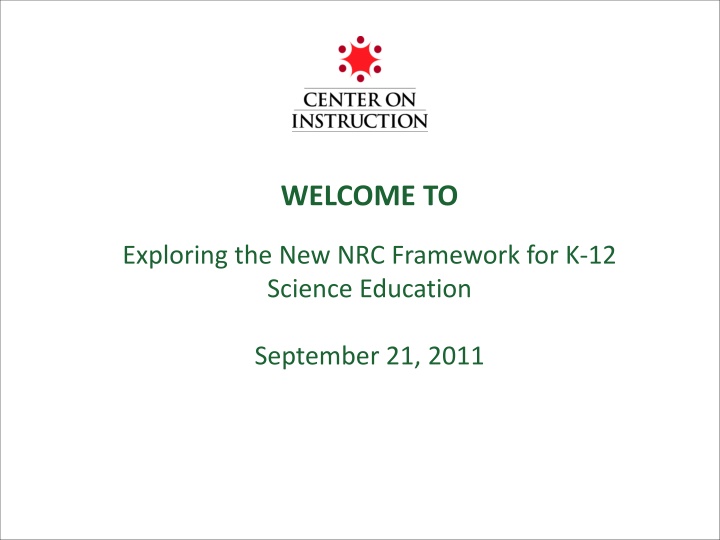
Exploring New NRC Framework for K-12 Science Education
Delve into the details of the New NRC Framework for K-12 Science Education released in July 2011. Learn about the key components, objectives, and advancements in science education highlighted in this framework. Share your insights and questions in the interactive webinar setting to enhance your understanding of this crucial aspect of science education.
Download Presentation

Please find below an Image/Link to download the presentation.
The content on the website is provided AS IS for your information and personal use only. It may not be sold, licensed, or shared on other websites without obtaining consent from the author. If you encounter any issues during the download, it is possible that the publisher has removed the file from their server.
You are allowed to download the files provided on this website for personal or commercial use, subject to the condition that they are used lawfully. All files are the property of their respective owners.
The content on the website is provided AS IS for your information and personal use only. It may not be sold, licensed, or shared on other websites without obtaining consent from the author.
E N D
Presentation Transcript
WELCOME TO Exploring the New NRC Framework for K-12 Science Education September 21, 2011 Funded by U.S. Department of Education
The Center on Instruction is operated by RMC Research Corporation in partnership with the Florida Center for Reading Research at Florida State University; Instructional Research Group; Lawrence Hall of Science at the University of California-Berkeley; the Texas Institute for Measurement, Evaluation, and Statistics at the University of Houston; and The Meadows Center for Preventing Educational Risk at the University of Texas at Austin. The contents of this PowerPoint were developed under cooperative agreement S283B050034 with the U.S. Department of Education. However, these contents do not necessarily represent the policy of the Department of Education, and you should not assume endorsement by the Federal Government. The Center on Instruction requests that no changes be made to the content or appearance of this product. To download a copy of this document, visit www.centeroninstruction.org. 2011 Funded by U.S. Department of Education
Exploring the New NRC Framework for K-12 Science Education Center on Instruction Webinar September 21, 2011 By Craig Strang, Vanessa Lujan, Lynn Barakos, Lawrence Hall of Science
A Framework for K-12 Science Education Released by the National Research Council of the National Academies of Science July 19, 2011 1st Step in developing Next Generation Science Standards Achieve will develop Standards within 18 months An Evolutionary (not Revolutionary) step forward Builds on Nat l Science Education Standards, Benchmarks for Science Literacy We ve learned a lot about learning and teaching of science There have been advances in scientific knowledge
Some Questions to You Have you read the Framework or become familiar with its contents? Click the green check button for Yes or the red X for No underneath the Chat Box on the bottom right of your screen What issues or concerns are you hearing about the Framework? Briefly write what you re hearing into the Chat Box What questions do you have? Write your questions at any time during this webinar in the Chat Box
Notable Features: Content Addresses the Mile Wide/Inch Deep Problem Fewer Big Ideas arranged as progressions of learning Engineering, Technology and Applications of Science is Elevated Ocean, Climate and Earth Systems Science are IN! These are good things; see if you can applaud when you hear something you like! (Click on the button under the Chat Box)
Notable Features: Processes Inquiry and Science Processes are re-defined as Scientific and Engineering Practices These Practices represent strategic, synergistic integration with ELA CCSS
Prospects for Impact 20 States agreed yesterday to participate in the development of the Standards (AZ, CA, GA, IA, KS, KY, ME, MD, MA, MI, MN, NJ, NY, OH, RI, SD, TN, VT, WA, WV) CCSS has some momentum, but implementation has been problematic due to funding constraints and lack of guidance from states to districts
Dimensions of the Framework Dimension 1: Scientific and Engineering Practices Dimension 2: Crosscutting Concepts Dimension 3: Disciplinary Core Ideas
Dimension 1: Scientific & Engineering Practices 1. Asking Questions and defining problems 2. Developing and using models 3. Planning and carrying out investigations 4. Analyzing and interpreting data 5. Using math, information/computer technology, computational thinking 6. Constructing explanations, designing solutions 7. Engaging in argument from evidence 8. Obtaining, evaluating, communicating information
Asking Questions and Defining Problems Science begins with a question about a phenomenon, such as Why is the sky blue? or What causes cancer? and seeks to develop theories that can provide explanatory answers to such questions. A basic practice of the scientist is formulating empirically answerable questions about phenomena, establishing what is already known, and determining what questions have yet to be satisfactorily answered.
Constructing Explanations and Designing Solutions The goal of science is the construction of theories that can provide explanatory accounts of features of the world. A theory becomes accepted when it has been shown to be superior to other explanations, in the breadth of phenomena it accounts for, and its explanatory coherence and parsimony. Scientific explanations are explicit applications of theory to a specific situation or phenomenon, perhaps with the intermediary of a theory-based model for the system under study. The goal for students is to construct logically coherent explanations of phenomena that incorporate their current understanding of science, or a model that represents it, and are consistent with the available evidence.
Engaging in Argument from Evidence In science, reasoning and argument, are essential for identifying the strengths and weaknesses of a scientific claim and for finding the best explanation for a natural phenomenon. Scientists must defend their explanations, formulate evidence based on a solid foundation of data, examine their own understanding in light of the evidence and comments offered by others, and collaborate with peers in searching for the best explanation for the phenomena being investigated.
Obtaining, Evaluating, and Communicating Information Science cannot advance if scientists are unable to communicate their findings clearly and persuasively or to learn about the findings of others. A major practice of science is thus the communication of ideas and the results of inquiry orally, in writing, with the use of tables, diagrams, graphs, and equations, and by engaging in extended discussions with scientific peers. Science requires the ability to derive meaning from scientific texts (such as papers, the Internet, symposia, and lectures), to evaluate the scientific validity of the information thus acquired, and to integrate that information.
English Language Arts Common Core State Standards Focus on informational text Focus on Disciplinary Literacy very similar to Practices of Science http://www.corestandards.org/the- standards/english-language-arts-standards Guess what? English Teachers are Science Teachers now! Science Teachers are ELA Teachers now!
K-5 ELA Anchor Standards College & Career Readiness Speaking & Listening 3. Evaluate a speaker s point of view, reasoning, and use of evidence and rhetoric (NGSS Practice: Argumentation) 4. Present information, findings, supporting evidence such that listener can follow line of reasoning and the organization, development, style are appropriate to task, purpose, audience (Constructing Explanations) 5. Make strategic use of digital media, visual displays of data to express information and enhance presentations (Obtaining, Evaluating, Communicating Information)
Grade 3 Reading Informational Text RI.3.3. Describe the relationship between a series of scientific ideas, concepts or steps in technical procedures in a text, using language that pertains to time, sequence, cause/effect (Obtaining, Evaluating, Communicating Information) Read and comprehend informational texts including science and technical texts at the high end of grades 2-3 text complexity band independently and proficiently (Obtaining, Evaluating, Communicating Information)
Grades 6-8 Literacy in Science RST.6-8.3. Follow a multistep procedure when carrying out experiments, taking measurements, performing technical tasks (Planning & Carrying Out Investigations) RST.6-8.4. Determine meaning of symbols, key terms, other domain specific words as used in scientific texts (Obtaining, Evaluating, Communicating Information) RST.6-8.7. Integrate quantitative or technical information expressed in words with a version of that information expressed visually in a flowchart, diagram, model, graph or table (Obtaining, Evaluating, Communicating Information) RST.6-8.8. Distinguish among facts, reasoned judgment based on research findings, and speculation in a text (Argumentation)
Grades 11-12 Literacy in Science RST.11-12.7. Integrate, evaluate multiple sources of information presented in diverse formats and media, e.g., quantitative data, video, multimedia, to address a question or solve a problem (Obtaining, Evaluating, Communicating Information) RST.11-12.8. Evaluate hypotheses, data, analysis, and conclusions in a science text, verifying the data when possible and corroborating or challenging conclusions with other sources of information (Argumentation) RST.11-12.9. Synthesize information from a range of sources (e.g., texts, experiments, simulations) into a coherent understanding of a process, phenomenon, or concept, resolving conflicting information when possible (Constructing Explanations)
Question for You: Are you seeing States/Districts incorporating disciplinary literacy as emphasized in the ELA CCSS into their ELA curriculum and assessments? If so, how? Write a brief response into your Chat Box
Dimension 2: Cross-Cutting Concepts Patterns Cause and Effect Scale, Proportion and Quantity Systems and System Models Energy & Matter: Flows, Cycles, Conservation Structure and Function Stability and Change
Dimension 3: Disciplinary Core Ideas Organized into Four Domains Physical Science Life Sciences Earth & Space Sciences Engineering, Technology and the Applications of Science
Disciplinary Core Ideas Broad Explanatory Power Each Core Idea is introduced with a question and has description of what students should understand by end Grade 12 Followed by Grade Band End Points (suggestive of Learning Progressions) Engineering has new emphasis More Ocean, Climate and Earth Systems Science
Example of a Core Idea Earth & Space Sciences Core Idea 2: Earth Systems: How and why is the earth constantly changing? ESS2.C: The Roles of Water in Earth s Surface Processes: How do the properties and movements of water shape Earth s surface and affect its systems? Earth is often called the water planet water s unique properties make it central to earth s dynamics These properties include Water is found everywhere on earth, from high in the atmosphere to Energy from the sun and gravity drives cycling and propels oceanic and atmospheric circulation 97% of Earth s water is in the ocean Water shapes landscapes through Shoreline waves are powerful agents of erosion coastlines have moved back and forth over continents due to rise and fall of sea level as the climate changed
Grade Band End Points for ESS2.C By the end of grade 2: Water is found in the ocean, rivers, lakes, ponds. Water exists as ice and in liquid form. It carries soil and rocks from one place to another and determines the life forms that can live in a location. By the end of grade 5: Water is found almost everywhere on Earth: as humidity, fog, clouds, rain/snow falling from clouds; as ice, snow, running water on land and in the ocean; as groundwater. Water flowing to the ocean shapes the appearance of the land. Nearly all Earth s available water is in the ocean. Most fresh water is in glaciers or underground; only a tiny fraction is in streams, lakes, wetlands, the atmosphere.
Grade Band End Points for ESS2.C By the end of grade 8: Water continually cycles among land, ocean and atmosphere via The complex patterns of changes and the movement of water in the atmosphere, determined by winds, landforms, and ocean temperatures and currents, are major determinants of local weather patterns. Global movements of water are propelled by sunlight and gravity. Variations in density due to variations in temperature and salinity drive a global pattern of interconnected ocean currents. Water movements cause weathering and erosion By the end of grade 12: The abundance of water on Earth s surface and its unique properties are central to the planet s dynamics. These properties include exceptional capacity to absorb, store and release energy; transmit sunlight; expand upon freezing; dissolve and transport materials; and lower the viscosities/melting points of rocks.
Our Hope Science is Back! The dismantling of elementary science is over! CCSS and Next Generation Science Standards represent a cultural shift in teaching and learning from an era of memorizing to an era of thinking Seamless strategic, synergistic integration of science and language arts results in deeper conceptual understanding of complex ideas Students use knowledge of science and engineering to improve their lives, solve societal problems and make the world a better place
Your Questions: You can raise your hand and ask a question verbally or Write your questions in the Chat Box Thank you for your time today! Please take our survey at http://www.surveymonkey.com/s/SYRMVRB. This will only take about 5 minutes of your time, and it is important to us. (Click on the link available now in the Chat Box from Ruth Dober)

